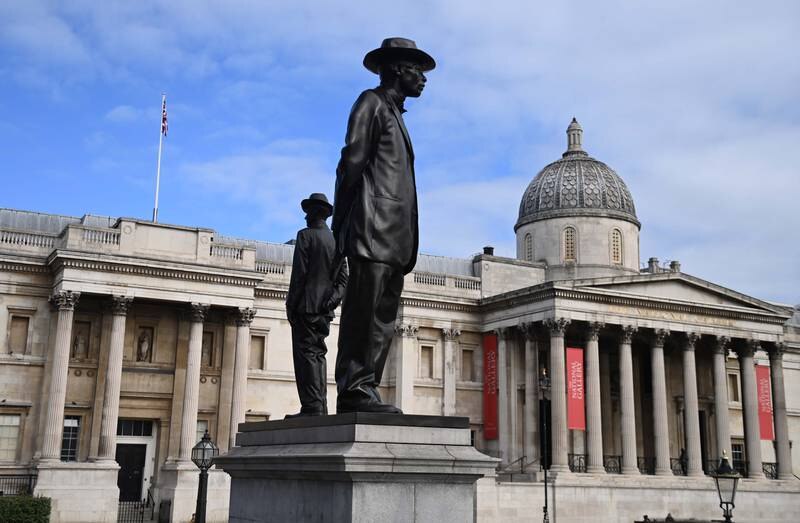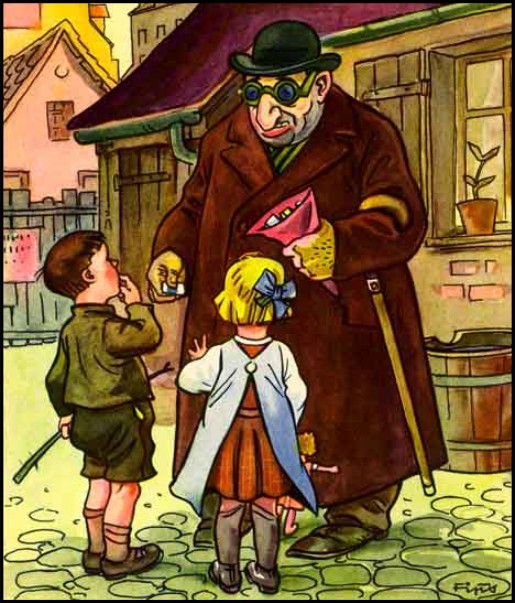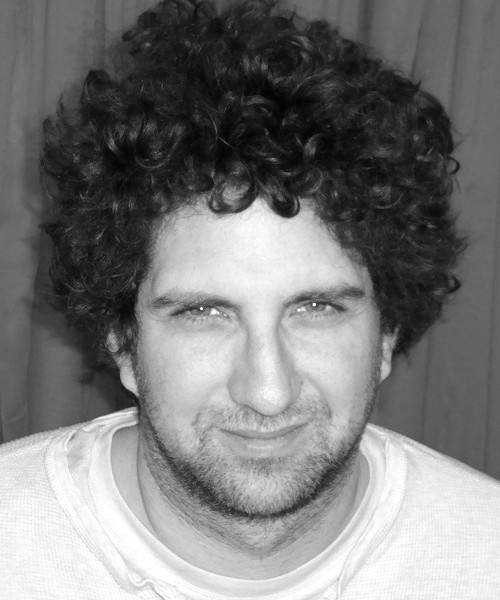In my previous essay in this series, we examined the Jews who owned and operated the media “watch dogs” and fact checkers who harassed and censored popular natural health doctor Joseph Mercola and Children’s Health Defense (CHD), especially for their views on covid vaccines and the covid pandemic generally. While Mercola wrote in extensive detail about the media firms defaming and denouncing him as a quack and “disinformation agent,” and CHD featured Mercola’s essay on its website in solidarity, neither mentioned the overwhelmingly Jewish dominance of their adversaries, such as at Publicis Groupe and Newsguard, among others. Mercola and CHD were strong enough to mount an aggressive defense against their accusers, but too weak to indicate that they were primarily Jews. I speculated that Mercola and CHD must have known, but suffered the grip of Semitophobia in imagining what dire defamation would ensue should they mention the Jewish Issue. They could confront Big Pharma, main media and the government health agencies, but not Jews.
(I must note that I have changed the title of this series from “Jewish Problem” to “Jewish Issue,” because I have come to think that Jews are not simply a problem to be solved, but something much more complex: an issue to be resolved.)
Now another popular and growing outlet, Global Research, appears to have succumbed to the same Semitophobia as Mercola and CHD in obscuring the Jewish Issue. Titled “How Private Interests and the Banking Dynasties Control Washington,” I was naturally intrigued to see if author Shane Quinn (“obtained an honors journalism degree and he writes primarily on foreign affairs and historical subjects. He is a Research Associate of the Centre for Research on Globalization”) obscured or revealed the Jewish Issue on this obvious topic.
Like many authors at Global Research, Quinn is too critical of US foreign policy, especially in the decades throughout the Cold War prior to full Jewish dominance in the US. I strongly disagree with such statements he makes as “The disappearance of the USSR in 1991, a strategic catastrophe for Russia…” and “The Soviet Union’s existence had guaranteed a measure of security in the international arena, providing a bulwark against the expansionist forces of the United States.” In my understanding, the disappearance of the USSR was an eventual blessing for the Russian people—the overwhelmingly Jewish oligarch predation during the transition was the catastrophe—and while the US was mostly concerned with capitalist access to resources and markets, its pretext of preventing the spread of communism was not without merit, especially given its disastrous record in many places.
Much of the later portion of Quinn’s essay focuses on arms makers and oil companies, departing from the focus of the title, banking dynasties. For our purpose here, let us examine the following key statement Quinn makes in his sixth paragraph:
The strongest branch of the Federal Reserve is the New York Federal Reserve Bank, which fell under the control of 8 long-established banking families. Only 4 of these dynasties hail from largely American backgrounds which are Goldman Sachs, the Rockefellers, Lehman Brothers and Kuhn Loeb. The other 4 are the Rothschilds in Paris and London, the Warburgs from Germany, the Lazards from France and Israel Moses Sieff from Britain.
Quinn gives no specific citations, only a general bibliography. I traced this quote to his source The World Disorder: US Hegemony, Proxy Wars, Terrorism and Humanitarian Catastrophes by Luiz Alberto Moniz Bandeira (Springer, 2019). Bandiera cites Dean Henderson’s essay on Global Research of June 2011, “The Federal Reserve Cartel: The Eight Families,” which was reposted in October of this year because it is “Of relevance to the current crisis.” Global Research calls it a “carefully researched article.” Quinn citing Bandiera citing Henderson all quote almost the exact same phrase:
W. McCallister, an oil industry insider with House of Saud connections, wrote in The Grim Reaper that information he acquired from Saudi bankers cited 80% ownership of the New York Federal Reserve Bank—by far the most powerful Fed branch—by just eight families, four of which reside in the US. They are the Goldman Sachs, Rockefellers, Lehmans and Kuhn Loebs of New York; the Rothschilds of Paris and London; the Warburgs of Hamburg; the Lazards of Paris; and the Israel Moses Seifs [sic] of Rome.
The only J W McAllister (different spelling) I could find was an author of science fiction and fantasy books self-promoting on Twitter. I found no reference to a book, article or publisher named The Grim Reaper. Who the “Saudi bankers” were who disclosed the eight families that owned the Federal Reserve, and how they knew, remains a mystery. It is considered that the House of Saud itself is crypto-Jewish, descended from followers of the Jewish depraved cult leaders Sabbatai Zevi and Jacob Frank.
I do have an issue with Quinn’s extensive plagiarism in this section of his essay, quoting verbatim or almost verbatim, without proper citation. For our purposes however, let us accept that this reference is accurate since it is so widely cited as a credible source. A quick glance at the eight names immediately shows that at least six are Jews: Goldman Sachs, Lehmans, Kuhn Loeb, Rothschilds, Warburgs and Israel Moses Sieffs. After confirming their Jewish racial origins (not necessarily their religion), we will examine another Jewish banking family, the Lazard family of Paris. The Rockefellers we will maintain as the lone exception, since they are well-known to be White Anglo-Saxon Protestants (WASPS), although inter-marriage, collusion and philo-Semitism must not be excluded.
Goldman Sachs
While the bank’s Wikipedia entry makes no mention of Jews, it does explain the founding of the investment bank in 1869 by Jew Marcus Goldman, joined by Goldman’s son-in-law Jew Samuel Sachs in 1882. Of thirteen CEOs and Presidents, ten were/are Jews, aside from the founders including Weinberg, Levy, Rubin, Friedman, Blankfein and Solomon (current). Be assured all of their Wikipedia “Early Life” or “Personal Life” entries reveal that they were/are Jews. Much of the rest of the Goldman Sachs entry chronicles the frauds and scandals the bank has perpetrated, and some of the enormous fines it has paid while maintaining its status in the government’s Troubled Assets Relief Program—a bailout scheme for banks such as Goldman Sachs that are “too big to fail.”
In his excellent Rolling Stone essay of 2010, Wall Street journalist Matt Taibbi recounts six major swindles Goldman Sachs has perpetrated. His title is expressive of his theme: “The Great American Bubble Machine”: “From tech stocks to high gas prices, Goldman Sachs has engineered every major market manipulation since the Great Depression — and they’re about to do it again.” Taibbi gives us this succinct description of Goldman Sachs: “The world’s most powerful investment bank is a great vampire squid wrapped around the face of humanity, relentlessly jamming its blood funnel into anything that smells like money.” Humorous, but true.
Lehman Brothers
The history of this corrupt investment bank began when three Jewish brothers, Henry, Emanuel and Mayer emigrated to the US southeast from Germany, and founded Lehman Brothers in 1850. As was common among Jews in the American Southeast, at least one brother, Mayer, owned seven Black slaves. They began trading in cotton before and during the Civil War, and moved their headquarters to New York City by 1870.
Later a son named Phillip and then a grandson Robert led the company through the troubles of the Great Depression. By 1969 Robert died and none of the founding Lehmans were in management. A non-Jew named Pete Peterson (real name Petropoulos, apparently Greek) took over through hard times, and by 1977 merged Lehman Brothers with the Jewish Kuhn Loeb and Co. (see below). Peterson brought up Jewish Lewis Glucksman to be co-CEO, but inevitable disputes ousted Peterson and left Glucksman sole Jewish CEO. Due to his dysfunctional personality disrupting internal operations, American Express bought Lehman Kuhn Loeb in 1984. Peter A Cohen became CEO. By 1993 Harvey Golub was CEO, during which time American Express spun off Lehman Brothers Holdings as a public offering. Richard Fuld took over the new firm. He was named by Time Magazine as one of the top 25 people to blame for the financial collapse of 2008. Cohen, Golub, and Fuld are or were Jewish.
In 2008 when Lehmans was foundering under losses in the subprime mortgage crisis, members of executive management joined together to force non-Jewish President and Chief Operating Officer Joseph Gregory to resign, and installed non-Jew Bart McDade in his position. Fuld remained as CEO, but was distanced from the new President and upper management. McDade brought back two executives Gregory had dismissed, at least one of whom, Michael Gelband is likely Jewish based on a Haaretz article from 2017. I could not confirm whether the other returning manager Alex Kirk is Jewish.
In mid-September 2008, Lehman Brothers filed for bankruptcy, further shocking the financial markets in their downward plunge. By March 2010 consideration arose that Fuld might go to prison, along with other executives, Jewish and non-Jewish, at Lehman Brothers.
Kuhn Loeb
This international investment bank based on Wall Street in New York City was founded by Jews Abraham Kuhn and his brother-in-law Solomon Loeb in 1867. Jewish Jacob Schiff came to America and married Loeb’s daughter and led the bank to prominence and competition with JP Morgan’s bank in funding America’s industrial development.
To demonstrate the nepotism and close in-group extended family relations of these Jewish bankers, Jewish author of an acclaimed Schiff biography Naomi W Cohen states: “For many years the early Schiffs shared ownership of a two-story house with the Rothschilds.” Jacob was raised in this house. Wikipedia tell us that Jacob’s father Moses was a broker for the Rothschilds.
At Kuhn Loeb, Jacob Schiff issued loans amounting to $200 million at the time, $4.6 billion in 2020 values, to the empire of Japan in its war with Russia in 1904–5. Schiff’s Wikipedia entry admits that Schiff harbored a hatred for the Czar and Russia due to alleged “pogroms” against Jews there, but only supported the Kerensky Provisional government, not Bolshevik Jews Trotsky (Bronstein) and one quarter Jew Lenin (Ulyanov) when they quickly seized power from Kerensky. This could be whitewashing, since other accounts claim Schiff was so anti-Russian he was willing to be pro-Bolshevik. Some historiography claims it was possibly Jacob Schiff who issued the order for the Czar, his wife and five children to be slaughtered in the basement of the Ekaterinberg house where they were confined. A number of the most active murderers were Jews.
Schiff died in 1920, and Jews Otto Kahn and Felix Warburg took leadership of the bank. Kahn gained public prominence and was called “The King of New York.” As a lawyer, Kahn was adept at smooth-talking a Federal Congressional investigation of the Great Crash of 1929 (for which Jewish bankers bore a large share of guilt).
In 1933, the smooth and affable Kahn successfully disarmed antagonism against members of the banking community during four days of testimony before the United States Senate’s Pecora Commission hearings into the Wall Street Crash of 1929.
Felix Warburg was a member of the infamous Jewish banking family that had been operating since 1798 in Germany. So many of these Jewish bankers we are examining intermarried, becoming one large extended family of nepotism exercising control over huge areas of finance and commerce. Felix married Jacob Schiff’s and Teresa Loeb’s daughter Frieda, bringing him into the family and into leadership at Kuhn Loeb bank. American Communist author John Spivak
argued that the (Business Plot to enact a violent coup d’etat of the Roosevelt administration in 1933) was part of a ‘conspiracy of Jewish financiers working with fascist groups’, referring specifically to Felix Warburg, the McCormack–Dickstein Committee, and certain members of the American Jewish Committee in collusion with J. P. Morgan.
As we saw, Kuhn Loeb merged with Lehman Brothers, which was then bought by American Express in 1984. At that time the Kuhn Loeb corporate name was retired. The families continued.
The Rothschilds
Turning to those foreign bankers cited by Quinn in noting that the Federal Reserve, “fell under their control,” we come at once to the Rothschilds of Paris and London. So much has been written about the Rothschild (Bauer) banking family, making it the most infamous of all the Jewish banking families, that we can hardly consider much of it here. Werner Sombart in his canonic work The Jews and Modern Capitalism mentions the Rothschilds only once, among a list of other Jewish banking families dominant in Europe by at latest 1850. The National Socialist government of Germany under Dr. Joseph Goebbel’s Ministry of Information established a new agency, the Institute for the Study of the Jewish Question, which produced its report by 1937, Germany and the Jewish Problem, also identifying the Rothschilds—among a number of other Jewish bankers—as primarily responsible for the impoverishment and ruin of the German nation and people during the Weimar period (1919–1932). Rothschilds were also active in neighboring Austria, centered in Vienna’s financial district, from which the world-wide Great Depression spread through Europe, just as in the US it spread from Wall Street in New York City.
The greatest white-washing of the Rothschilds’ devastating usury, war-mongering and mass impoverishment activities while glutting their rapacious greed and world control agenda is found in Niall Ferguson’s two volume official biography of the family, The House of Rothschilds, Volume 1: Money’s Prophets, 1798–1848 and Volume 2: The World’s Bankers, 1849–1999. Even here Ferguson acknowledges the family used deception, family and tribal nepotism, blackmail, of course ruinous usury rates imposed on desperate people, economic bullying and other typically unscrupulous Jewish business practices on a grand scale to increase its already enormous fortune. Ferguson would never use these terms, but we must if we are to be honest about the devastating effects the Rothschild Jewish banking family has had throughout the world.
I wrote a historical research essay that was featured on the cover of the September/October 2021 anniversary issue of The Barnes Review, titled “Hitler Versus the Rothschilds.” Readers learned that the National Socialist government, in bold moves for self-defense of their nation and people, imprisoned five members of the Rothschild family, starting immediately after the Anschluss (re-unification of Germany and Austria) in the spring of 1938, including Louis Rothschild, President of the Vienna branch of the banking empire. This alone was reason enough for the Rothschilds to direct Britain, France, the US and other nations to wage war on Germany—60-70 million people died in World War II, but the Rothschilds profited (One Rothschild family member, an aunt named Aranka, died in the Ravensbrook prison for women, reportedly from disease such as typhus. Louis was released to Britain after one year in German prison).
The outcome of World War II saw the promise of the Balfour Declaration, an agreement between the British government and the House of Rothschild first arranged in 1916, to give British-administered Palestine over to Zionist Jews for their final “homeland.” The Rothschilds were instrumental in establishing the Zionist state though their funding of the Jewish National Fund, and the Palestine Jewish Colonization Association, support for Theodore Herzl and the World Zionist Congress, funding for infrastructure, including government buildings and for arms to the Zionist terror groups Haganah, Irgun and Stern Gang (Lehi) and many other measures to build up the nation of Israel. Almost immediately this inflicted the Nakba (i.e., “the Catastrophe”), on at least 700,000 Palestinian people who had been living and working in the region for centuries, and caused their ongoing misery and death to this day—to say nothing of the ongoing misery and death Israel has spread throughout the wider Middle East since, at the urging and support of the Rothschilds.
In the last section and Conclusion, we will turn to the most respected and accepted account of the founding of the Federal Reserve, which of the eight families Quinn cites, the Rothschilds and Warburgs are the primary culprits.
The Warburgs
This Jewish banking family is said to have originated as Venetian Jews, built up a fortune in Spain, and ended up establishing in Warburg, Germany, adopting the name in the 1500s. After establishing major banking firms from 1798 through to a great-great grandson in 1946, Wikipedia (which we know is Zionist-controlled) is so honest as to state:
Paul Warburg is most famous as an architect of the US Federal Reserve System, established in 1913. Paul was a member of the first Federal Reserve Board, and its Vice Chairman until his resignation in August 1918.
The only edit I would introduce here is from “famous” to “infamous,” since the Federal Reserve system and its accompanying income tax collection to pay the interest on the debt to the Jewish bankers has been to blame for the greatest impoverishment and financial enslavement ever imposed on the US population. Paul Warburg himself wrote a comprehensive account of the creation of the Federal Reserve, titled The Federal Reserve System, Its Origin and Growth (Arno Press, A New York Times Company, New York, 1975).
Four other major accounts of the creation of the Federal Reserve are presented, three of them having Paul Warburg in the title: J. Lawrence Broz, The International Origins of the Federal Reserve System (Cornell University Press, 1997); Board of Governors of the Federal Reserve System, “Paul M Warburg,” Federal Reserve History, n.d.; Michael A. Whitehouse, “Paul Warburg’s Crusade to Establish a Central Bank in the United States,” The Region (Publication of the Federal Reserve Bank of Minneapolis, 1989); Richard A. Naclerio, “Paul M. Warburg: Founder of the United States Federal Reserve.” History Faculty Publications—Sacred Heart University, 2013. In the Broz book, the name Warburg is mentioned 105 times in 260 pages.
The Abstract of Naclerio’s paper at Sacred Heart University will serve to summarize:
The name Paul Moritz Warburg is synonymous with the founding of the Federal Reserve System. Over the years preceding the formation of the Federal Reserve, Warburg wrote many essays and gave many public addresses on banking reform. His reform ideas were modeled on the central banking systems of many European counties he dealt with through the family business M.M. Warburg.
From this, we may ourselves further summarize: Paul Warburg imposed the same ruinous debt control and usury grift on the Unites States as his ancestors and other Jewish bankers had imposed on European nations. In our last section and Conclusion we will return to Warburg’s role in creating the Federal Reserve, referencing the most well-known work on the subject.
The Lazards
Just as with the five brothers of the Rothschild and Warburg families, this Jewish banking family’s enormous wealth and power began in 1848 when the five brothers began their bank during the the California Gold Rush. Within three years they were established in San Francisco and New York and expanded into foreign markets. By 1854 Alexandre Lazard moved to Paris to set up a banking firm there, and by the turn of the twentieth century they were operating interlocking investment houses in Paris, New York and Britain.
In the post-World War II affluence, the Jew Andre Meyer led the US operations of Lazard. Meyer teamed up with the Jewish Felix Rohatyn to practically invent the Mergers & Acquisitions market, in some cases known as “hostile takeovers.” Subsequent top management and CEOs at Lazard include Michel David Weill and two of his brothers, Bruce Wasserstein, and Kenneth Jacobs. Be assured all their Early Life sections in Wikipedia declare they are Jews, except Jacobs, whose entry is under the category American Jews. One current Lazard Board Member of note is Richard Haass, Jewish, who has also been the President of the powerful Council on Foreign Relations for almost twenty years. I profile Haass and the other Jews who dominate the CFR in my essay Jews of the CFR.
Notable current and former employees include Jews Mark Pinkus, Steve Rattner, Gerald Rosenfeld, Nathaniel Rothschild, Bernard Selz and many others. Most have started their own investment firms, with Rosenfeld a former CEO of Rothschild North America, and Selz also an “anti-vaccination supporter.” Of note among Lazard employees in politics and public service are Jews Ron Bloom (economic advisor to the Obama Administration), Peter R. Orszag, (Director of the Office of Management and Budget under Obama, Director of the Congressional Budget Office, Fellow at CFR, New York Times columnist), and Lord Peter Mandelson (former British Secretary of State),
Israel Moses Sieff
The Sieff family of Jews came from Lithuania and set up a profitable textile business in Britain. Israel Sieff was born in Manchester and became friends with Simon Marks, also Jewish and son of a founder of a wealthy department store, Marks and Spencer. When Israel and Simon married each other’s sisters, they became brothers-in-law. Sieff joined the firm in 1923 as vice-chairman and joint managing director, Together he and Marks expanded Marks and Spencer throughout the British Isles, selling clothing, health and beauty aids, and food. When Marks died in 1964, Sieff became sole Chairman. By 1966 Sieff was recognized as Baron Sieff, of Brimpton in the Royal County of Berkshire. Sieff died in 1972 before the chain expanded into Canada, France and Belgium.
Israel Sieff was a devoted Zionist, and at the age of 26 “was a member of the Zionist Commission which visited Palestine under the leadership of Chaim Weizmann.” In fact, Sieff was its secretary. The Zionist Commission was inspired by the Balfour Declaration to visit Palestine and study conditions there in order to make recommendations to the British administration for the eventual creation of the Jewish state of Israel. Weizmann went on to become Israel’s first President.
In 1932 when Israel’s son Daniel died at the age of seventeen, Israel endowed the creation of the Science Research Institute in Daniel’s name, later renamed the Weizmann Institute of Science in 1949. This was located in the Jewish town of Rehovot, in the Negev Desert which was in Palestine at the time of its founding.
After Israel’s death in 1972, his son Marcus—also recognized as Lord Sieff of Brimpton by Margaret Thatcher—became chairman of Marks & Spencer until 1984. This was the era when Marks & Spencer spread into other European nations, struggling to remain solvent during repeated failures.
Marcus may have been a more devoted Zionist than his father, according to The Guardian promotion piece obituary of 2001:
Sieff, who came from a strongly Zionist family, had first visited Palestine in 1929. In 1948, he was invited by David Ben Gurion, Israel’s first prime minister, to become adviser on transportation and supplies for the Israeli defence ministry.
We know of the efforts of Jewish organized crime bosses such as Meyer Lansky and Samuel Bronfman in supplying arms to Israeli terror groups, and Marcus Sieff was officially asked to participate by Ben Gurion himself. This Sieff was chairman of the First International Bank of Israel Financial Trust from 1983 to 1994, chairman of the firm which published The Independent, and president of the Anglo-Israel chamber of commerce.
Turning to Marks & Spencer itself, we see Under Criticisms and Controversies, Anti-Israel Protests:
Marks & Spencer has been repeatedly targeted and boycotted by anti-Israel protestors during the Arab League boycott of Israel. In 2014, it was reported that the Marble Arch branch was picketed weekly by protesters objecting to the sale of Israeli goods.
Very little is mentioned of any involvement of the Sieff family in banking, and nothing among these various Wikipedia entries of its involvement in the Federal Reserve. The company does partner with notoriously corrupt—and Jewish—bank HSBC to offer financial services and loans. We must look to the work of Stephen Mitford Goodson, A History of Central Banking and the Enslavement of Mankind (2014) to find some association. On page 76 Goodson presents a list of “(the Federal Reserve’s) principal shareholders”:
Rothschild banks of London and Berlin
Lazard Brothers banks of Paris
Israel Moses Sieff banks of Italy
Warburg banks of Hamburg and Amsterdam
Shearson American Express
Goldman Sachs of New York
JP Morgan Chase Bank
Goodson’s source for this is the iconic work of Eustace Mullins, Secrets of the Federal Reserve, published in 1993. It states:
The shareholders of these banks which own the stock of the Federal Reserve Bank of New York are the people who have controlled our political and economic destinies since 1914. They are the Rothschilds, of Europe, Lazard Freres (Eugene Meyer), Kuhn Loeb Company, Warburg Company, Lehman Brothers, Goldman Sachs, the Rockefeller family, and the J.P. Morgan interests. (p. 50)
Mullins makes no mention of Sieff, and provides no citations, instead offering an extensive bibliography. We have no reference for where Goodson derives his knowledge of Sieff banks in Italy being principal shareholders of the Federal Reserve by 2013. I could find no other reference to Sieff banks in Italy. It is interesting that five of the Jewish families mentioned here are on the list of eight Quinn cites at the founding of the Federal Reserve, with American Express possibly qualifying as a sixth, since it once owned Kuhn Loeb. Mullins’ list also covers six of Quinn’s original families, substituting Lehmans for Sieffs.
The Canon on the Founding of the Federal Reserve
The most well-known source among certain circles describing the founding of the Federal Reserve is The Creature from Jekyll Island by G. Edward Griffin. In this extensive work, Griffin concurs that Paul Warburg was the dominant force in imposing the central bank’s control over the US, citing other authors who state the same:
With the exception of Aldrich, all of those present (on Jekyll Island) were bankers, but only one was an expert on the European model of a central bank. Because of this knowledge, Paul Warburg became the dominant and guiding mind throughout all of the discussions. Even a casual perusal of the literature on the creation of the Federal Reserve System is sufficient to find that he was, indeed, the cartel’s mastermind. Galbraith says “Warburg has, with some justice, been called the father of the system.” Professor Edwin Seligman, a member of the [Jewish] international banking family of J. & W. Seligman and head of the Department of Economics at Columbia University, writes that “in its fundamental features, the Federal Reserve Act is the work of Mr. Warburg more than any other man in the country.” (p 17)
Griffin lists the seven men in the gilded train car traveling to Jekyll Island on that cold winter night in 1910, who controlled one quarter of all the world’s wealth. Number seven is described thus:
Paul M. Warburg, a partner in Kuhn, Loeb & Company, a representative of the Rothschild banking dynasty in England and France, and brother to Max Warburg who was head of the Warburg banking consortium in Germany and the Netherlands. (p 5)
Griffin says it was Rothschild funding that enabled Paul and Felix Warburg to buy partnerships in Kuhn Loeb (p 18). Also, “the blunt reality is that the Rothschild banking dynasty in Europe was the dominant force, both financially and politically, in the formation of the Bank of the United States,” (p 331) which preceded the Federal Reserve. An alliance between the Rothschilds and JP Morgan in America partially hid the Rothschild role in the formation of the Federal Reserve, since “anti-Semitism” and “anti-Rothschild” sentiment was high regarding bankers. Morgan himself may have faked “anti-semitism” as part of the cover-up:
How much of Morgan’s apparent anti-Semitism was real and how much may have been a pragmatic guise is, in the final analysis, of little importance, and we should not give unwarranted emphasis to it here. Regardless of one’s interpretation of the nature of the relationship between the Houses of Morgan and Rothschild, the fact remains that it was close, it was ongoing, and it was profitable to both. If Morgan truly did harbor feelings of anti-Semitism, neither he nor the Rothschilds ever allowed them to get in the way of their business. (p 419)
Of the other six men on the train to Jekyll Island Griffin lists, no one else is Jewish:
- Nelson W. Aldrich, Republican “whip” in the Senate, Chairman of the National Monetary Commission, business associate of J.P. Morgan, father-in-law to John D. Rockefeller, Jr.;
- Abraham Piatt Andrew, Assistant Secretary of the United States Treasury;
- Frank A. Vanderlip, president of the National City Bank of New York, the most powerful of the banks at that time, representing William Rockefeller and the international investment banking house of Kuhn, Loeb & Company;
- Henry P. Davison, senior partner of the J.P. Morgan Company;
- Charles D. Norton, president of J.P. Morgan’s First National Bank of New York;
- Benjamin Strong, head of J.P. Morgan’s Bankers Trust Company; (p 5)
Conclusion
Our focus is on whether, in revealing the names of the banking family dynasties in Quinn’s Global Research article obscures the Jewish Issue. He most certainly does, given that at a glance at least six of the names out of eight are immediately recognizable as Jewish, yet Quinn will not say as much. Many other sources we have examined in this essay also obscure the Jewish Issue. For instance, in 611 pages G Edward Griffin only mentions Jew, Jews and Jewish 9 times, a few of them only in citations.
Overwhelmingly the single group responsible for imposing and operating the Federal Reserve system over the American people and yielding enormous wealth for themselves, were Jews. Of these, the Jew Paul Warburg, backed and even at the direction of the Jewish Rothschilds, were the dominant culprits.
This is of immense importance. It goes beyond even the control that the Federal Reserve’s system has over the US economy. It leads us toward the final revelation of a Jewish agenda for world domination. Recall the statement made by son of Paul Warburg, James Paul Warburg, on the Congressional Record in 1950, before a Senate Subcommittee of the Committee on Foreign Relations, regarding Revision of the United Nations Charter. We will consider it in its succinct but potent entirety:
I am James P. Warburg, of Greenwich, Conn., and am appearing as an individual.
I am aware, Mr. Chairman, of the exigencies of your crowded schedule and of the need to be brief, so as not to transgress upon your courtesy in granting me a hearing.
The past 15 years of my life have been devoted almost exclusively to studying the problem of world peace and, especially, the relation of the United States to these problems. These studies led me, 10 years ago, to the conclusion that the great question of our time is not whether or not one world can be achieved, but whether or not one world can be achieved by peaceful means.
We shall have world government, whether or not we like it. The question is only whether world government will be achieved by consent or by conquest.
Today we are faced with a divided world—its two halves glowering at each other across the iron curtain. The world’s two superpowers—Russia and the United States—are entangled in the vicious circle of an arms race, which more and more preempts energies and resources sorely needed to lay the foundations of enduring peace. We are now on the road to eventual war—a war in which the conqueror will emerge well nigh indistinguishable from the vanquished.
The United States does not want this war, and most authorities agree that Russia does not want it. Indeed, why should Russia prefer the unpredictable hazards of war to a continuation of here [sic] present profitable fishing in the troubled waters of an uneasy armistice? Yet both the United States and Russia are drifting—and, with them, the entire world—toward the abyss of atomic conflict.
Here we see a Jewish banker, direct descendant of the man who established the Federal Reserve declaring we shall have a world government. He incites fear, drives division, and claims concern for the little people of the nation, an old strategy and cover story we have seen from Jewish bankers many times in history, and particularly now with fears of “climate change,” viral pandemics, and another nuclear war with Russia.
Clearly Jewish bankers have vast influence over the United States and much of the world, but authors such as Quinn, Griffin and many others are afraid to say so. Obscuring the Jewish Issue in banking does not keep anyone safe, including the authors. It only makes living in the world more dangerous. It might mean the end of the world as we’ve known and loved (or at least tolerated) it up until now.
As we penetrate the obscuring of the Jewish Issue in alt media, we have hope that we can move toward a final resolution of the Jewish Issue before the mass doom of the “world government” that James P. Warburg insisted was inevitable. It is coming now in the form of the World Economic Forum’s “Great Reset,” and it is known that the Board of Trustees of the WEF is dominated by Jews, and that Executive Chairman Klaus Schwab is Jewish through his mother.
Knowledge is power, and power is an effective self-defense.




 Leftists lie, Lola dies: the 12-year-old French girl raped and butchered by Muslims
Leftists lie, Lola dies: the 12-year-old French girl raped and butchered by Muslims Imran Shahid, a
Imran Shahid, a 

 Meet Noah Berlatsky, Jewish anti-racist, anti-fascist and pro-pedophile activist
Meet Noah Berlatsky, Jewish anti-racist, anti-fascist and pro-pedophile activist


